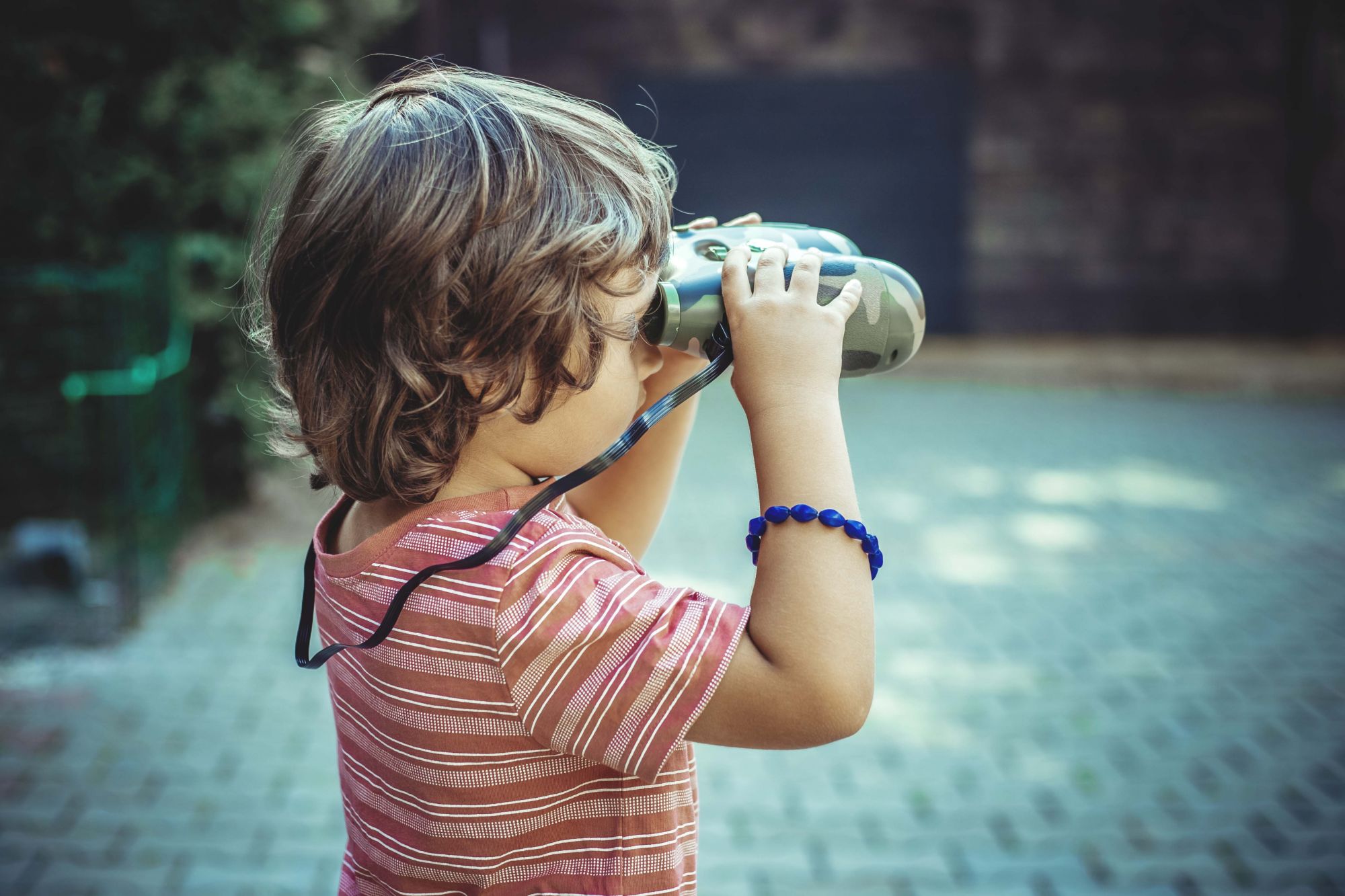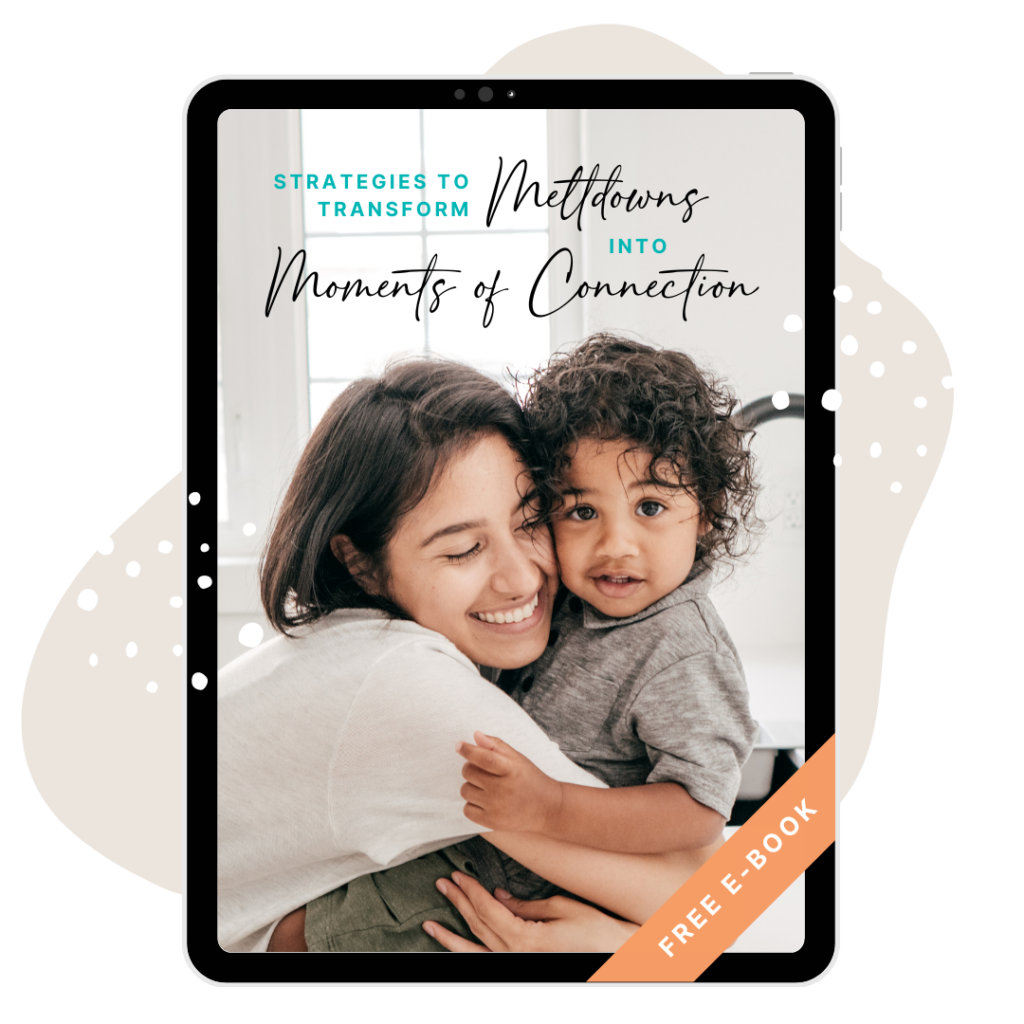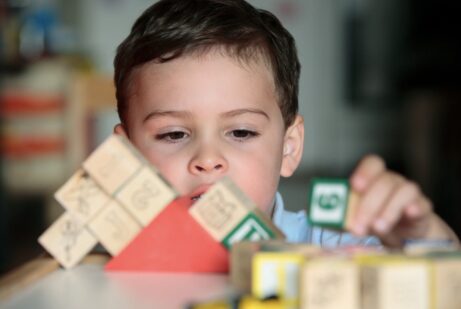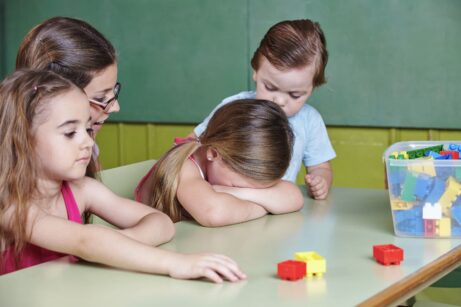How to Prepare for Change with Toddlers

The Balance Between Consistency and Change
In Montessori practice, we talk frequently about consistency so much so that sometimes we can fear change. Consistency is a cornerstone of preparing environments for toddlers. Everything in the world is so big and new for toddlers that consistency helps them prepare and know what to expect. Toddlers are looking for patterns to adapt to their culture and their community. When they think something will happen tomorrow and it does it slowly builds more and more confidence. Therefore consistency builds confidence.
Still, change is a natural part of life; seasons change, a child’s interest will change and night changes into day. Change is good it keeps things fresh and new. When change is balanced with consistency it helps children develop an ability to be flexible and problem solve. It’s when there is constant change without any consistency it becomes chaos. Chaos makes it difficult for a toddler to build confidence and they stay more dependent because they are more reliant on the adult to figure out what is happening.
There are two general ways to balance change and consistency. One way is to make small amounts of change while keeping most things consistent. Another way is to have a clear obvious change followed by a period of consistency. There are lots of different paces of change between these two types. By understanding the two opposite ends of the balance of consistency and change you can adapt Montessori practice to your unique situation.
Preparing for Small Changes
First is a slow change over a long period of time. Here so many things are consistent that children still feel confident in what to expect day to day. The few changes that happen are so small that they generate interest and fascination. An example is watching a garden grow. The garden needs to be watered, cleaning, loved and each new bud is a little miracle. Another example is giving new lessons in a classroom as a child grows.
These changes are easy to manage and sometimes happen without us even knowing. Yet, it is important to acknowledge these changes and so we see how we grow. It is also important to highlight these changes as it makes the world a more wonderful and mysterious place. For example on the first snowfall of the day spend some extra time outside to admire the change in seasons. Don’t get so lost in the importance of consistency that toddlers don’t learn to appreciate the nature of the world.
Preparing for Big Changes
The second type of change is more challenging. This is a big change where once the change has happened things will be different. This can be a simple daily change like going to sleep or waking up. Being awake is very different than being asleep. For a toddler, this is a big change and the more consistent their bedtime routine and sleeping environment is the better they will transition from being awake to being sleep. This type of change can also be a huge change like moving into a new house or starting preschool. Have lots of patients as a toddler will have to learn to trust themselves again as they learn what is new. The more consistency there is before and after the change the quicker a toddler will adjust. Here are a few guiding principles to implement before and after a big change to help things go as smoothly as possible.
Before the Change
- Talk about the change in concrete ways and talk about it a lot. For example “if you put your hand on my belly you can feel your brother kicking. He’s going to legs like you but much smaller” or “We’re moving to a new house and there are going to be dark brown cabinets” or “Daddy is starting a new job and he will be leaving earlier in the morning. So mommy is going to start taking you to school now”
- Wait until your toddler can see physical evidence of the change to start preparing them. Such as your toddler can see mom’s growing belly, packing boxes, or new work clothes for daddy new job. If there is no physical evidence you can show pictures. This may seem counter-intuitive but if you start preparing with your toddler too far in advance they may not understand and get confused.
- Involve your toddler in as many ways as possible. Keep these ways simple and practical. For example, let them help set up their baby brother’s room or let them pack a few boxes (packing a box of towels is harmless) or let them come shopping when buying new clothes for daddy’s new job
- Avoid telling them how they will feel. We can’t predict that. Toddlers gravitate toward concrete things anyway.
- Prepare the routines for after the change. If little things keep changing after the big change children can get lost. Really think through the details and plan for after the change so that even though things will be new and different it will still be consistent.
During the Change
- Plan for everything to take longer than it should. This will allow your toddler to observe and figure out everything going on. If your toddler feels rushed they may panic because they can’t figure out what is going on.
- Narrate the day for your toddler. There may be new things happening that they don’t have the language to talk about or express. By talking with will not only help your toddler understand the change taking place but it can also build their vocabulary.
- Have lots of extra patience. The change will likely be hard and mentally exhausting for your toddler so be understanding. If there are meltdowns be ready with an extra hug, extra snack and/or and extra snuggle at an early bedtime.

Discover practical, easy-to-implement strategies to gently navigate your child’s emotional outbursts, while maintaining your own sense of calm.
After the Change
- Keep routines and environment consistent. Things may not feel like they are working because everything is new to both you and your toddler. Give it some time. Keep being consistent for a few weeks or so before deciding that the routine really doesn’t work.
- Talk about the change to remind them of all the new things and continue to narrate as they learn. Talking about things from before the change can also help build their memory.
- Continue to have patience. It often takes toddlers about 2 months to adjust to a new routine before the start showing confidence and independence within a routine.
The Role of the Absorbent Mind Related to Change
Maria Montessori named the brain of children under 6 years old the Absorbent Mind. This Absorbent Mind gives children the ability to learn without effort. This means they are learning without any conscious effort and sometimes they are even not aware of what they are learning. The experiences from when a child has their Absorbent Mind construct their personality. By giving your toddler positive experiences with change their Absorbent Mind will use these experiences to build a proactive attitude towards change into their personality. This attitude will be with your toddler for the rest of their life.
Be mindful that children are also absorbing your attitudes about change and things going on in life. If you are scared or stressed about changes going on in your lives your toddler will pick up on this and feel the same way. Toddlers trust your feeling more than their own because they are so dependent and don’t have the life experience yet. So in preparing for your toddler for change don’t forget to prepare yourself. This way your toddler will learn from you and from their experience that change is good and they will have the confidence to face many things in their life.
Written by Emily Suarez
Montessori Beginnings
YOUR ULTIMATE
MONTESSORI PARENTING COURSE
FOR ZERO TO THREE
Gain clarity and confidence in your parenting to raise a resilient, independent and joyful child.


